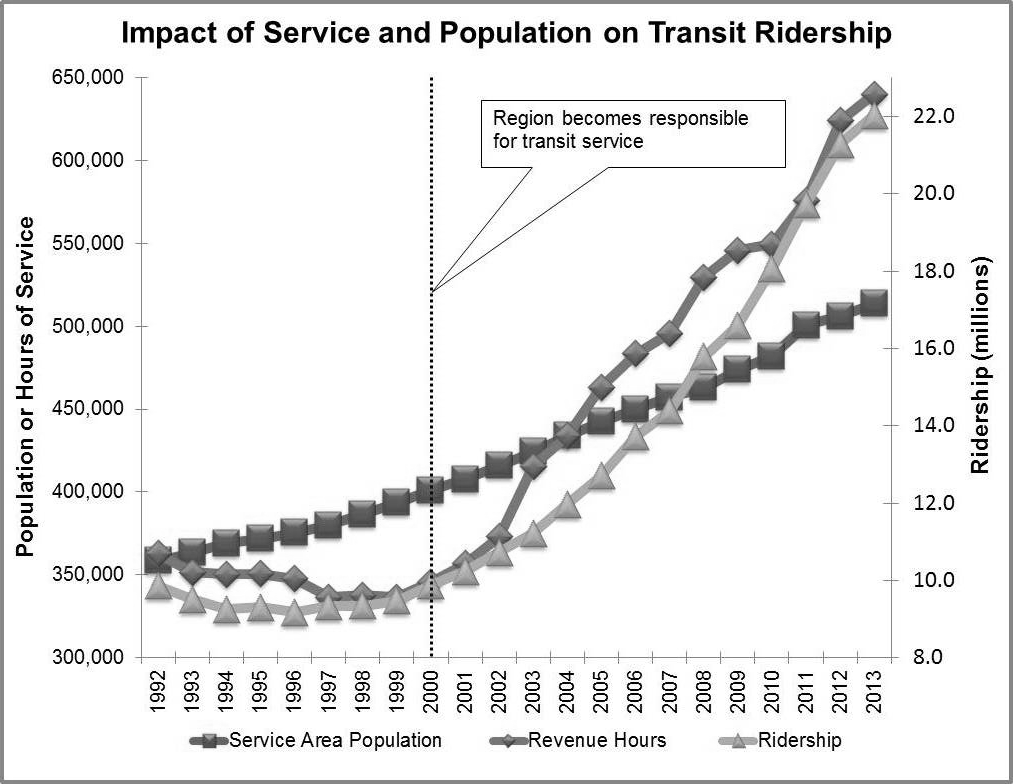In debunking Myth 2, we estimated the cost of running bus service to equal ION’s ridership in 2017 to cost $23.6 million, and by 2031 to cost $52.9 million. In comparison, the operations and financing cost of ION is $30 million a year. How did we reach these figures?
We started with the current situation: transit ridership has been growing much faster than population, but roughly in proportion to the amount of transit service being provided (measured in “service hours”– the number of hours each bus is providing scheduled transit service.)
 Source: Regional Transportation Master Plan progress report, Jan 2014, page 11
Source: Regional Transportation Master Plan progress report, Jan 2014, page 11
Our estimate is based on the cost of providing enough service hours for a growing ridership along the Central Transit Corridor in KW.
Cost per service hour is $138/hr for Waterloo Region in 2012 (sourced from the OMBI 2012 Performance Measurement Report, page 187). This figure includes amortization, meaning it accounts for the cost of the vehicle as well.
Given that we’re focusing on comparative costs for ION stage 1, all numbers for 200 iXpress have been limited to the Kitchener-Waterloo portion only.
Ridership targets for ION are 25,000 (2017) and 56,000 (2031). passengers per day. (Source) Central transit corridor ridership (route 7 and route 200 KW only) was 20,000 in 2013.
Our cost estimate for serving 20,000 passengers is $18.9 million. Spreadsheet.
Because the central transit corridor bus frequency is already driven by ridership, and peak time buses are routinely full, supporting further ridership requires a higher number of buses.
- Cost of supporting 25,000 riders = ($18.9M / 20,000) * 25,000 = $23.6M
- Cost of supporting 56,000 riders = ($18.9M / 20,000) * 56,000 = $52.9M
Given that operator hours (i.e. wages) drive a significant part of service hour costs, we could possibly reduce this figure by introducing higher capacity buses (such as articulated buses.) However, our observation from the OMBI report is that Ottawa’s service hour cost is higher partly because they use higher capacity buses.
